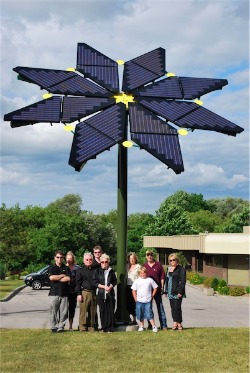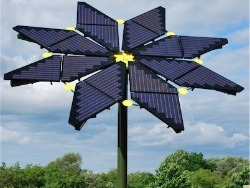 Colorado is the first U.S. state to follow in Canada’s footsteps democratizing solar power.This post originally appeared on Energy Self-Reliant States, a resource of the Institute for Local Self-Reliance’s New Rules Project.
Colorado is the first U.S. state to follow in Canada’s footsteps democratizing solar power.This post originally appeared on Energy Self-Reliant States, a resource of the Institute for Local Self-Reliance’s New Rules Project.
Want to go solar but you have a shady roof? You rent? You don’t have $40,000?
Last year, Colorado passed the first state law to create “community solar gardens” and the recent release of draft rules for Community Solar Gardens may open the floodgates, turning distributed solar power into democratic solar power.
A solar garden is a 2 megawatt or smaller solar photovoltaic (PV) project with 10 or more “subscribers” living in the same county. The solar gardens can be built by businesses, nonprofits, or utilities, but the operations must be handled by an organization solely devoted to the solar garden and its subscribers. Colorado utilities are required to purchase 6 megawatts of output from solar gardens by the end of 2013.
The solar garden concept was discussed in detail in our “2010 Community Solar Power” report, and our conclusion is unchanged by our review of the draft rules:
It’s clear that the policy will help overcome barriers to community solar, in particular by providing a legal structure for community solar projects and defining the type of generation they qualify as. Community solar gardens should expand participation in distributed solar generation and perhaps expand ownership as well. Solar gardens should help make solar more affordable by allowing for economies of scale in construction and installation, by enabling access to federal tax incentives, and by (unfortunately) using open fields instead of existing structures. Hopefully, the distributed nature of solar gardens will encourage projects to connect to existing grid infrastructure. Perhaps the greatest strength in the bill is creating an easily replicable model for community solar. While there will be variations as allowed by law, the creation of a defined “solar garden” in state law and a mandate for utilities to buy their electricity should encourage the development of many community solar gardens.
For more detail on the original law, read our “2010 Community Solar Power” report. The draft rules largely improve upon the law. Here are some details:
- No subscriber may own more than 40 percent of the solar shares.
- Compensation for subscribers is a proportional share of electricity (not to exceed 120 percent of consumption) and renewable energy credits.
- Half of the utility purchase obligation for community solar garden electricity must come from projects 500 kilowatts and smaller via a standard offer contract.
- 5 percent of community solar garden capacity is reserved for customers at or below 185 percent of the federal poverty limit.
The solar garden fills a major gap in solar policy, where those without a sunny roof were unable to make the switch to solar power. It overcomes the largest barrier to community solar: a replicable model for development. It also promises to significantly broaden ownership and participation in solar power production, making a much larger constituency for distributed, renewable energy.



